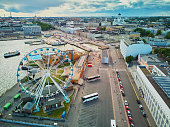Speakeasy
페이지 정보
작성자 Faye 작성일25-01-22 16:44 조회16회 댓글0건관련링크
본문
Speakeasy
A speakeasy is a term used to describe a secret or illicit bar that was well-liked through the Prohibition period within the United States, which lasted from 1920 to 1933. These institutions had been known for their hidden entrances and for serving alcohol despite it being unlawful on the time. Here are some key factors about speakeasies:
- Origin: The term "speakeasy" is believed to have originated from the follow of shoppers speaking quietly or "simply" to keep away from drawing attention.
- Hidden Locations: Many speakeasies were positioned in basements, behind unmarked doorways, and even in respectable companies like soda shops.
- Entertainment: These venues often featured stay music, dancing, and different forms of leisure, making them well-liked gathering spots.
- Cultural Impact: Speakeasies played a vital role in shaping the tradition of the Roaring Twenties and the jazz age.
- Modern Revival: Today, the concept of the speakeasy has made a comeback, with many bars adopting the hidden, secretive theme to create an exclusive ambiance.
Below are some well-known speakeasies from history:
- The Cotton Club (New York City)
- 21 Club (New York City)
- The Green Mill Cocktail Lounge (Chicago)
- Schroeder's (San Francisco)
In summary, speakeasies offer an interesting glimpse into a novel chapter of American historical past, highlighting themes of rebellion, creativity, and the battle for private freedom.
A speakeasy is a hidden bar or nightclub that originated through the Prohibition era in the United States (1920-1933). These establishments had been illicit and served alcohol when it was illegal to do so. Here are some key factors about speakeasies:

- Origin: The time period "speakeasy" supposedly comes from patrons speaking quietly or "simply" to avoid detection by law enforcement.
- Atmosphere: Speakeasies usually have a secretive vibe, with dim lighting, classic décor, and a sense of exclusivity.
- Access: Many trendy speakeasies maintain the idea of secrecy with hidden entrances or 제주유흥 requiring a password for entry.
- Cocktails: These venues typically serve craft cocktails, reviving basic recipes from the Prohibition period.
- Cultural Significance: Speakeasies symbolize the struggle in opposition to prohibition legal guidelines and a spirited nightlife tradition.
Today, speakeasies have made a resurgence as stylish bars that remember the fashion and spirit of the 1920s and Thirties.
Speakeasies were secret bars that emerged through the Prohibition era within the United States, which lasted from 1920 to 1933. These hidden establishments allowed patrons to devour alcohol despite its legality being prohibited.
Typically accessed through an unmarked door or a password, speakeasies supplied a sense of thrill and exclusivity. They were often located in basements, back rooms, or behind false storefronts, making them tough to find.
In these illicit venues, stay jazz music thrived, as they turned the cultural hubs for the Jazz Age. The ambiance was lively, full of dance and revelry. Women usually wore flapper clothes, symbolizing the altering social norms of the time.
Today, the term "speakeasy" has been revived, with trendy bars adopting the aesthetic and secretive allure of their Prohibition-era counterparts. Many feature classic decor, craft cocktails, and live music, offering a nostalgic glimpse into a captivating chapter of American historical past.
In essence, speakeasies embody a spirit of rebellion and creativity, reflecting the social dynamics of their time.
댓글목록
등록된 댓글이 없습니다.